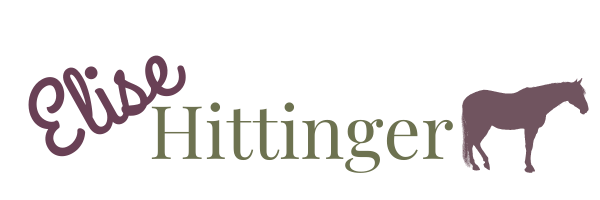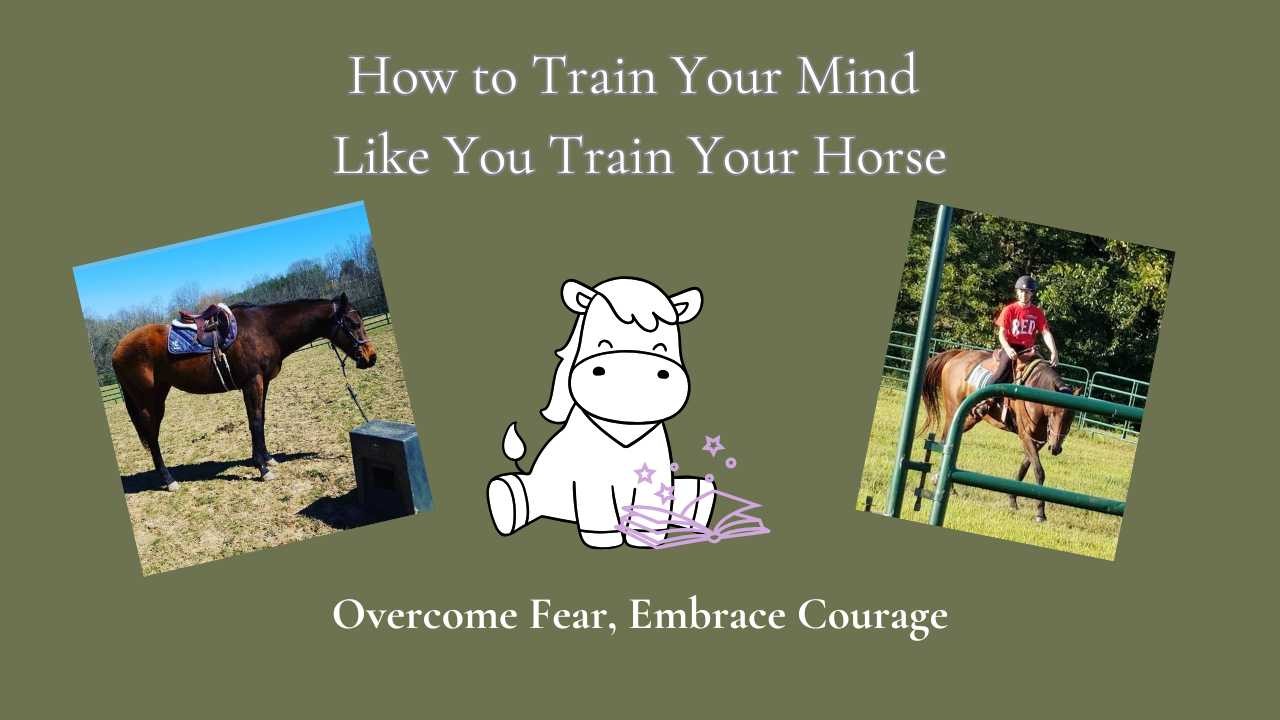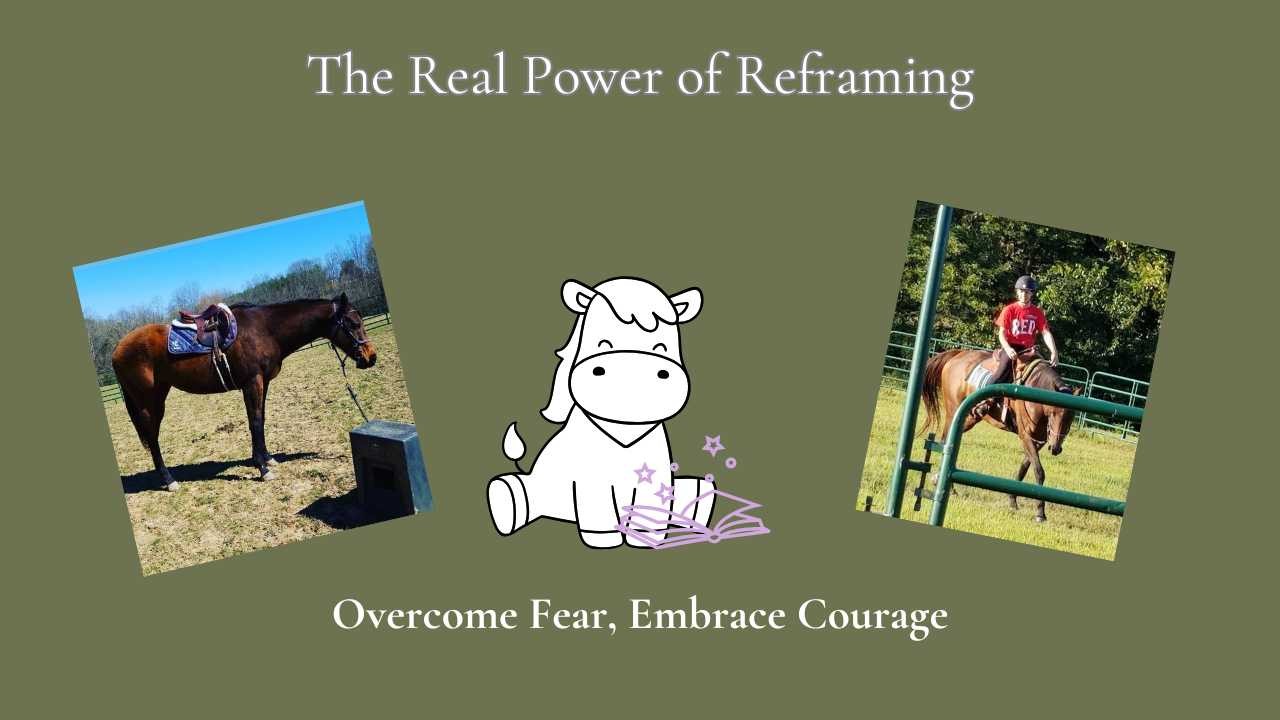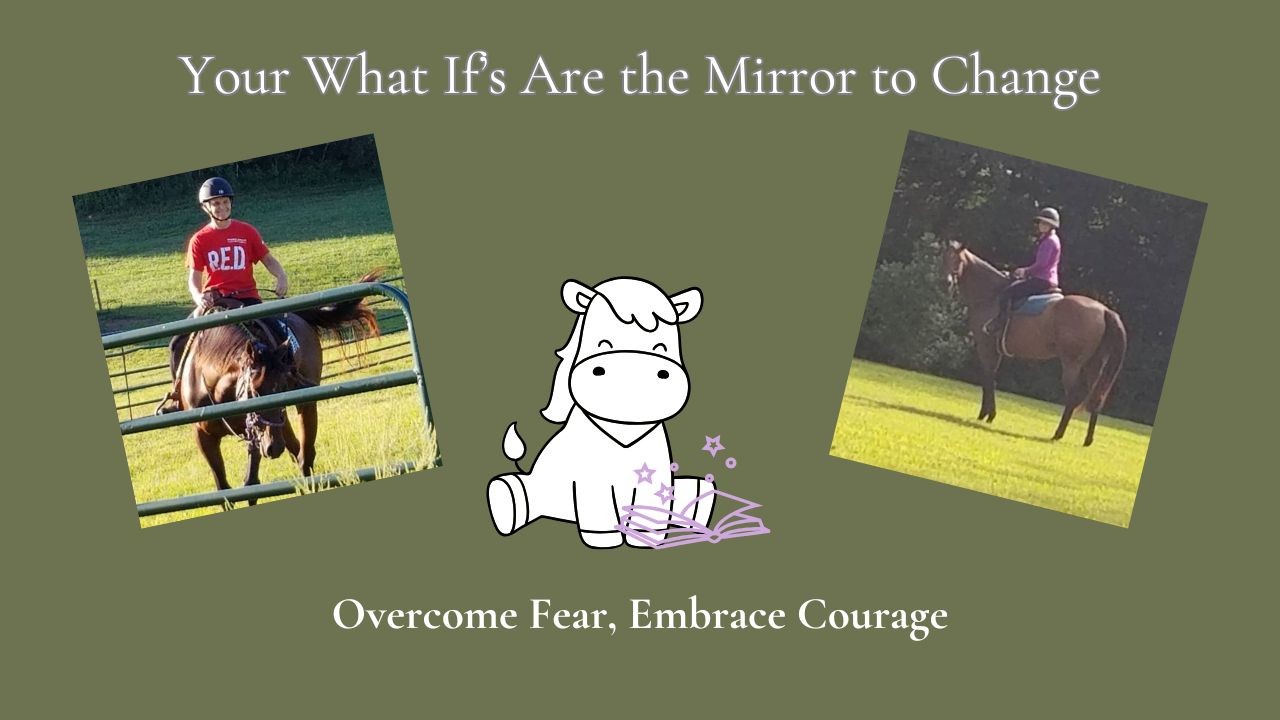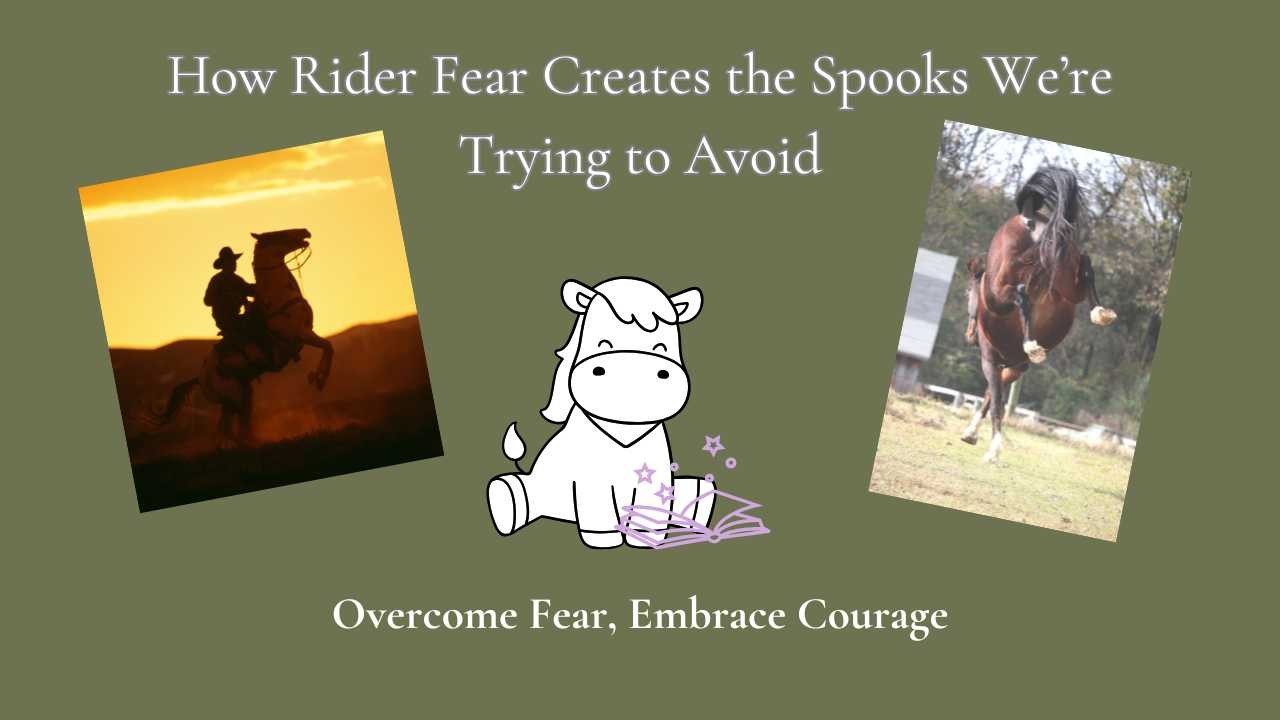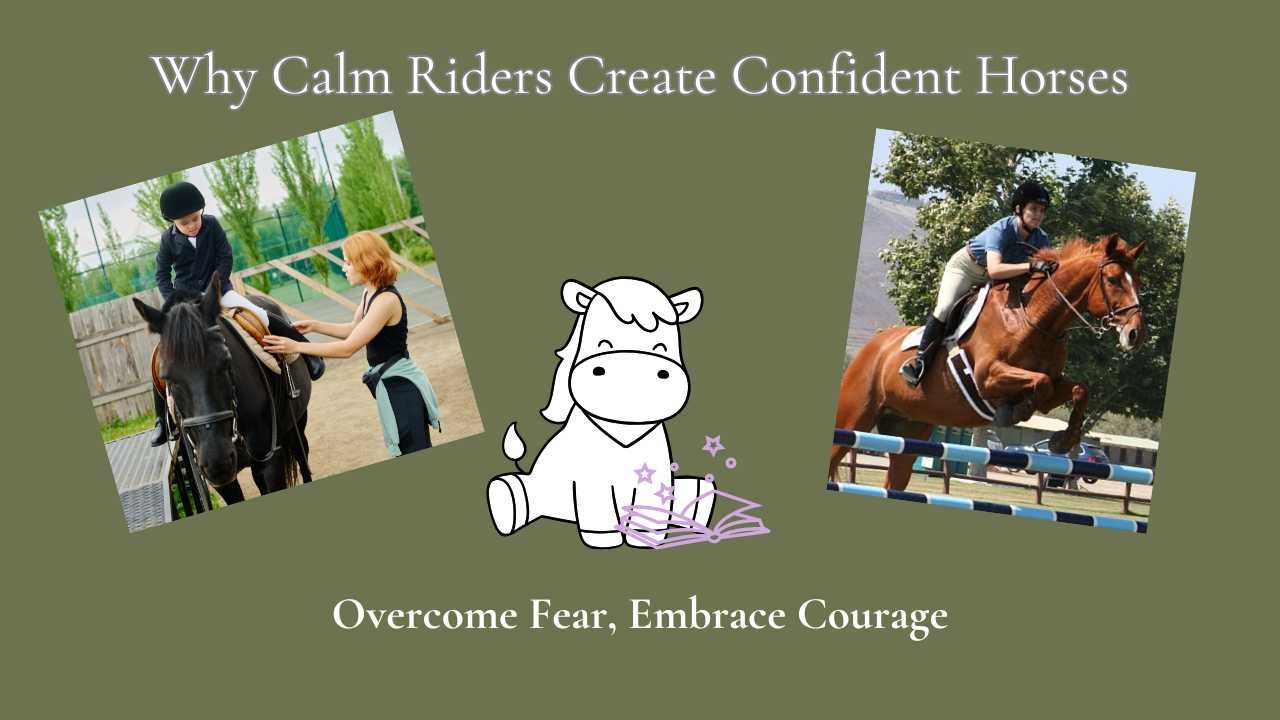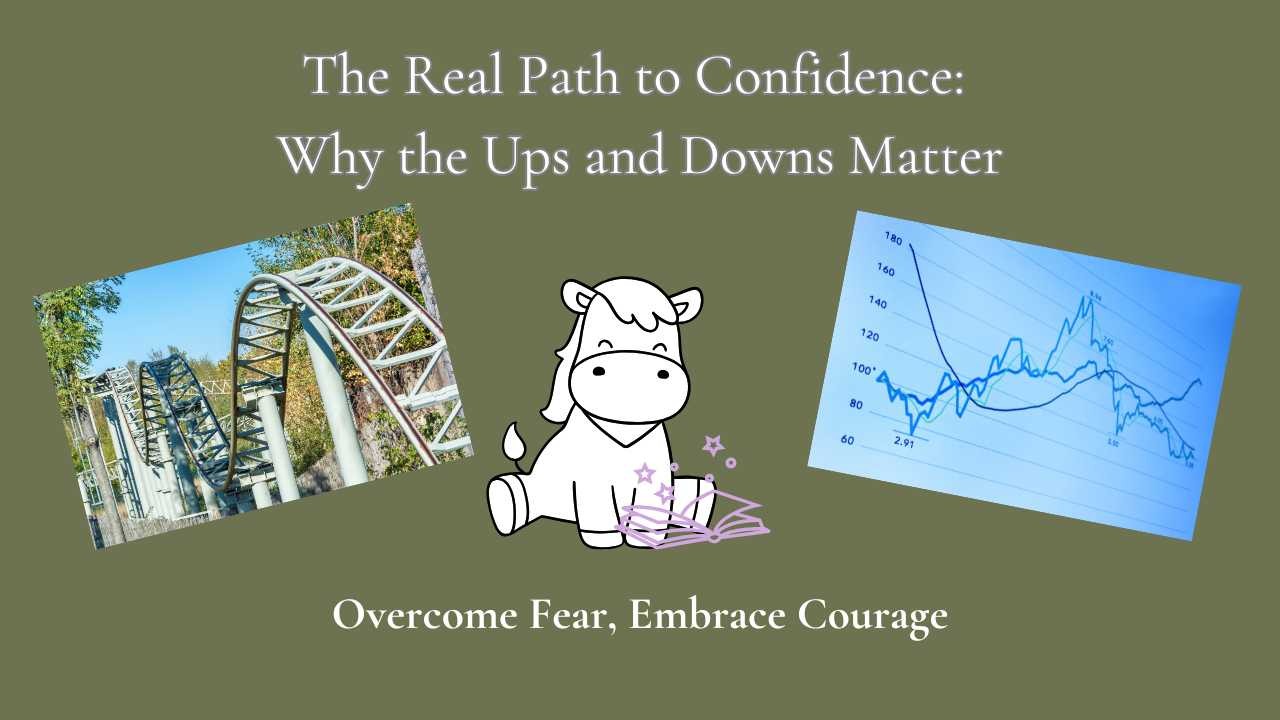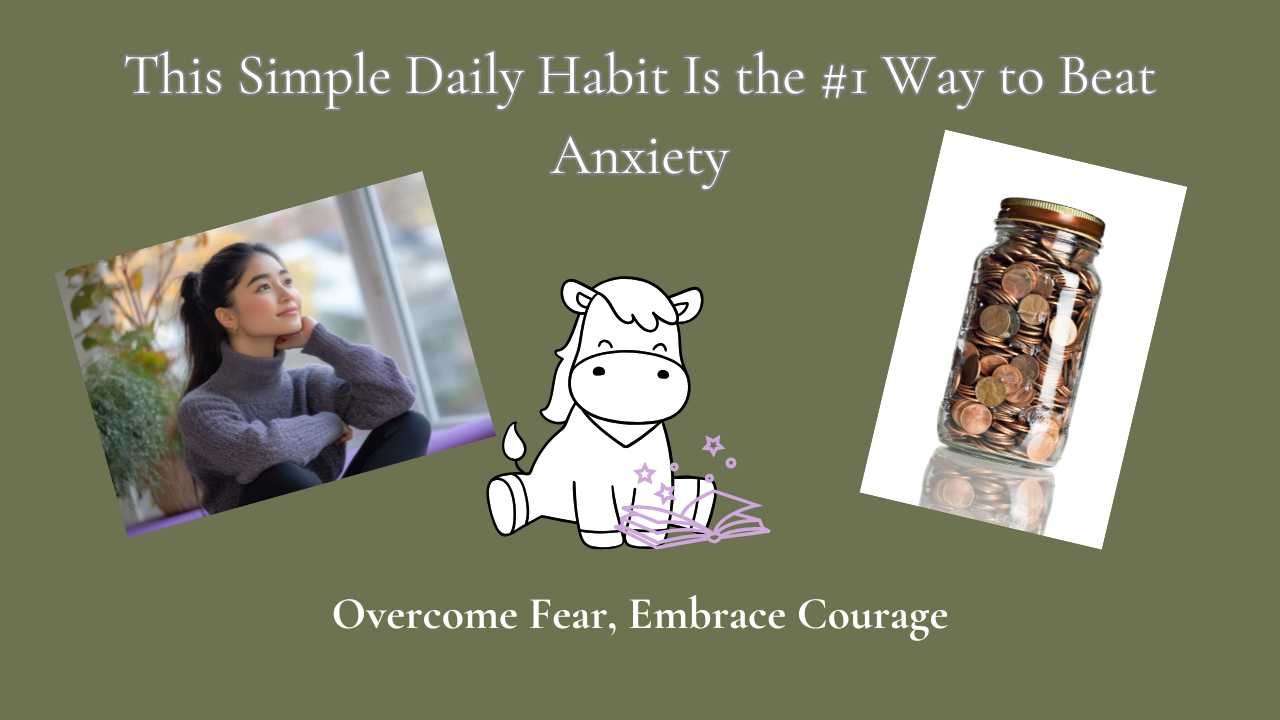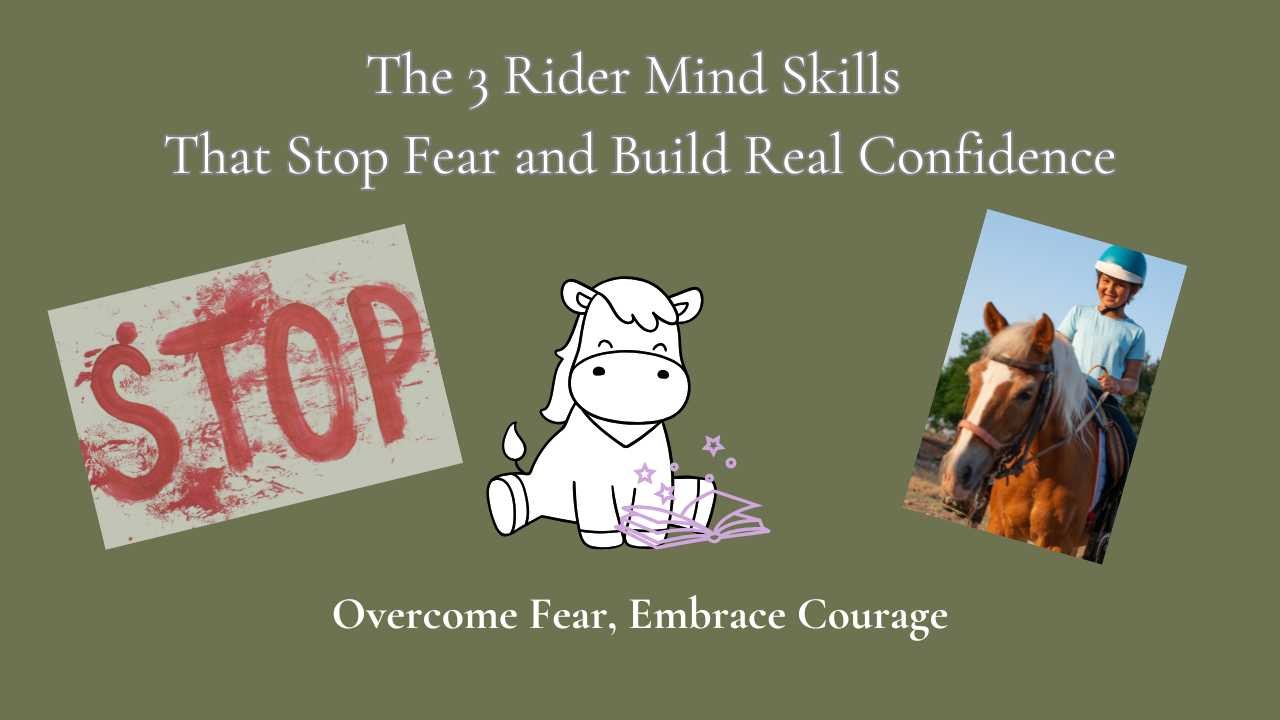
Most riders think confidence comes from miles in the saddle…
But the truth is, confidence comes from the mind skills you practice long before your foot ever hits the stirrup.
After coaching riders for years (and taking twenty long years to rebuild my own confidence the slow way), I’ve learned that three mental skills make the biggest difference in whether a rider spirals into fear… or rises into courage.
Here are the three mind skills every rider needs to build confidence:
1. Focus: Train Your Attention Like You Train Your Horse
Where your focus goes, your nervous system follows.
Most riders unintentionally feed fear by focusing on:
What might go wrong
What happened last time
What they don’t want
Focus is a skill, not a personality trait.
Confident riders learn to anchor their attention in the present moment, not in the past or the future.
A simple practice:
Pick one small “now” cue before every ride — your breath, your hands on the reins, your horse’s ears.
This breaks the fear loop and signals your brain that you’re safe. Let that cue bring you right back to now.
2. Flexibility: The Ability to Pivot Before Fear Explodes
Horses aren’t rigid, and we should follow their lead.
Fear builds when we tighten up and push through instead of adjusting early.
Mental flexibility means:
Noticing the first whisper of tension
Pivoting your plan when needed
Allowing yourself to regroup without judgment
It’s the same skill we use with our horses:
We help them before they blow up.
We respond to the first sign, not the meltdown.
Riders thrive when they extend that same compassion and responsiveness to themselves.
3. Fun: The Confidence Builder Most Riders Forget
Fear shrinks when joy grows.
Fun isn’t childish — it’s fuel for your nervous system.
When you intentionally create small moments of joy, your brain starts associating riding with safety, success, and connection instead of threat.
Fun might look like:
A relaxed walk in the pasture
A silly game
A ride with no agenda
A win you let yourself celebrate
If your training doesn’t include fun, your confidence will always feel fragile.
Final Thought
Confidence isn’t an accident — it’s built through focus, flexibility, and fun.
These three mind skills changed everything for me, and they can change everything for you too.
If you want help strengthening these skills and rebuilding your confidence faster (not the 20-year version!), book your Calm-Ride Strategy Call and let’s create your personalized path forward.
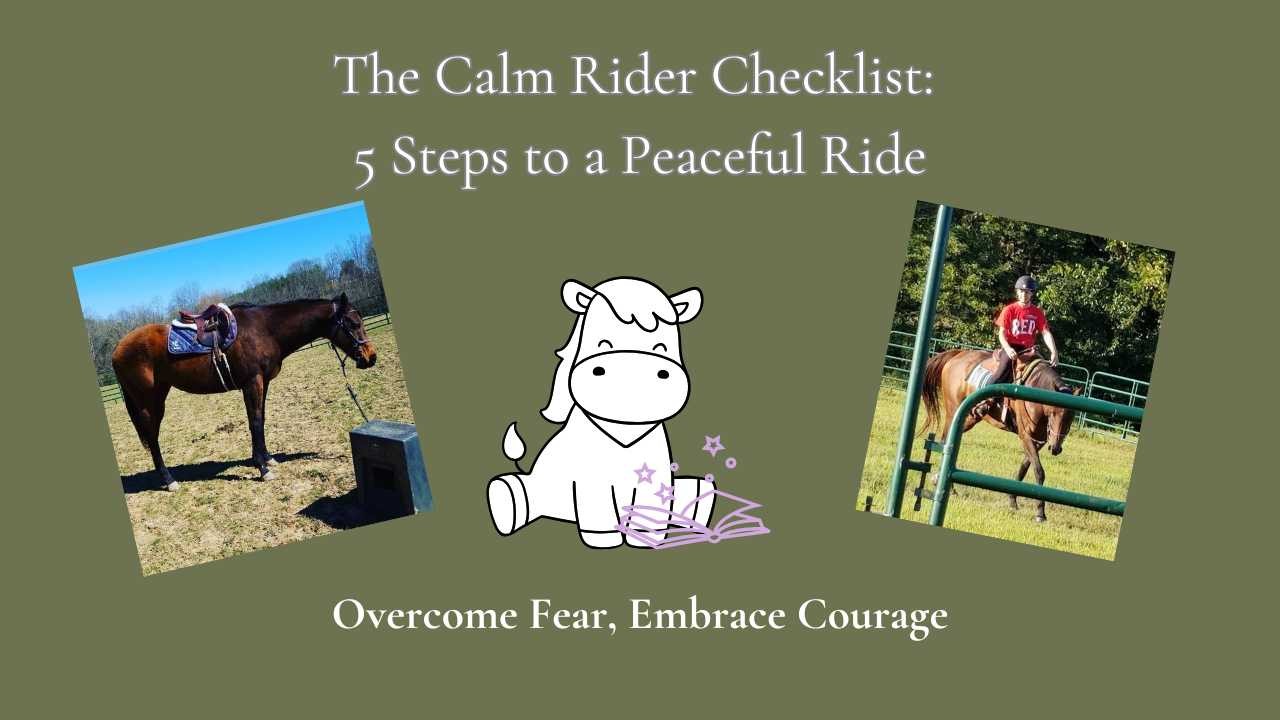
Calm riding doesn’t start in the saddle. It starts with how you show up—mentally, emotionally, and physically. Horses feel everything. If you’re tense, distracted, or rushing, they’ll mirror that energy. But when you bring calm, they respond in kind. Leave the monkey mind at home and really be present with your horse, it changes everything.
Here’s my go-to checklist for creating a peaceful ride:
1. Breathe First
Before you halter your horse, I love to do 3 "Ferris Wheel" Rounds or square breathing works great too. Let your shoulders drop. Let your thoughts settle. This simple pause sets the tone for connection.
Before you halter your horse, I love to do 3 "Ferris Wheel" Rounds or square breathing works great too. Let your shoulders drop. Let your thoughts settle. This simple pause sets the tone for connection.
2. Set a Clear Intention
Decide what kind of ride you want—not in terms of goals, but energy. Maybe it’s “softness,” “patience,” or “quiet communication.” Your intention becomes your anchor.
Decide what kind of ride you want—not in terms of goals, but energy. Maybe it’s “softness,” “patience,” or “quiet communication.” Your intention becomes your anchor.
3. Check Your Body
Scan for tension. Are your shoulders tight? Is your jaw clenched? Release it. Your horse will follow your lead—especially when your body speaks calm.
Scan for tension. Are your shoulders tight? Is your jaw clenched? Release it. Your horse will follow your lead—especially when your body speaks calm.
4. Simplify the Ask
Start with something easy. A relaxed walk. A gentle bend. Build trust through clarity, not complexity. When you simplify, your horse can succeed—and so can you.
Start with something easy. A relaxed walk. A gentle bend. Build trust through clarity, not complexity. When you simplify, your horse can succeed—and so can you.
5. End with Peace
No matter how the ride goes, finish with softness. A quiet walk. A loose rein. A shared breath. Let the final moment be one of calm.
No matter how the ride goes, finish with softness. A quiet walk. A loose rein. A shared breath. Let the final moment be one of calm.
This checklist isn’t about perfection. It’s about presence. When you show up with intention and softness, your horse feels it. And together, you create something peaceful—ride after ride.
Here is a link to my Pre-Ride checklists which help make sure you and your horse are calm before you ever get into the saddle! Get your own checklists here (free)!
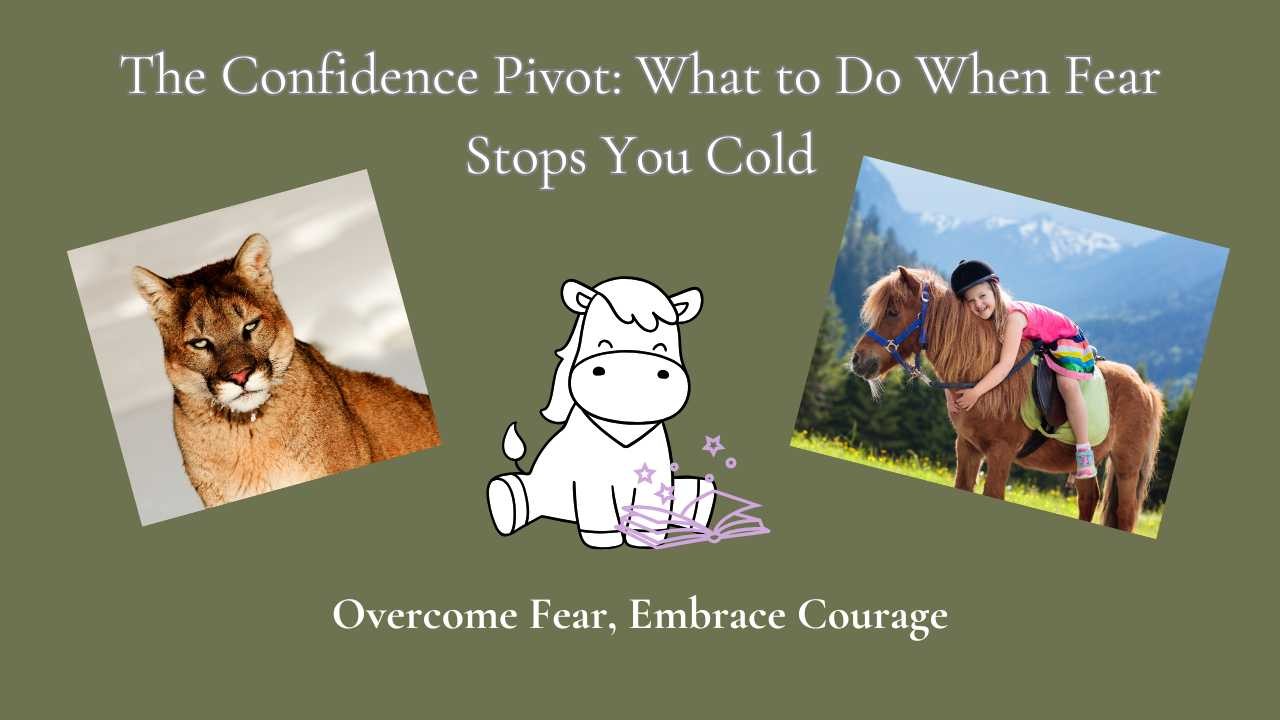
There’s a moment—maybe you’ve felt it—when fear hits so hard your body freezes. Your brain goes offline. Your breath disappears. And all the confidence you thought you had? Gone.
I’ve been there.
Years ago, a mountain lion jumped onto the back of my pony while I was riding. It missed me by inches, but ripped out part of her tail. I didn’t fall off. I didn’t scream. I was frozen to her neck. But I stayed on. I survived. And in the aftermath, something shifted.
I realized: I can ride!
I had faced the worst-case scenario—and I was still here.
That’s the confidence pivot.
It’s the moment when fear tries to shut you down, but something deeper rises up. Not bravado. Not perfection. Just presence. Just proof.
Most of us wait for confidence to show up after we’ve succeeded. But the truth is, confidence is born in the pivot—when fear stops you cold and you choose to move anyway.
You don’t need to face a mountain lion to find it. You just need to notice the moment when fear tightens its grip to stop you. That’s your cue.
Pause.
Breathe.
Ask: "What do I know? What have I already survived?"
Confidence isn’t loud. It’s quiet and steady. It’s the whisper that says, “You’ve done hard things before. You can do this too.”
The next time fear shows up—on the trail, in the arena, before a big call—remember this is your pivot point. The exact place where fear wants to stop you, is the doorway to everything confidence can unlock.
You don’t need to be fearless. You just need to remember who you are, and that you have already done it.
✨ Want more tools to help you pivot from fear to clarity? Grab my workshop in eBook form: The Confidence Blueprint—9 Powerful Principles to Rebuild Your Confidence.
Just $17. No travel, no pressure—just powerful insight, right where you are. Get your copy here!
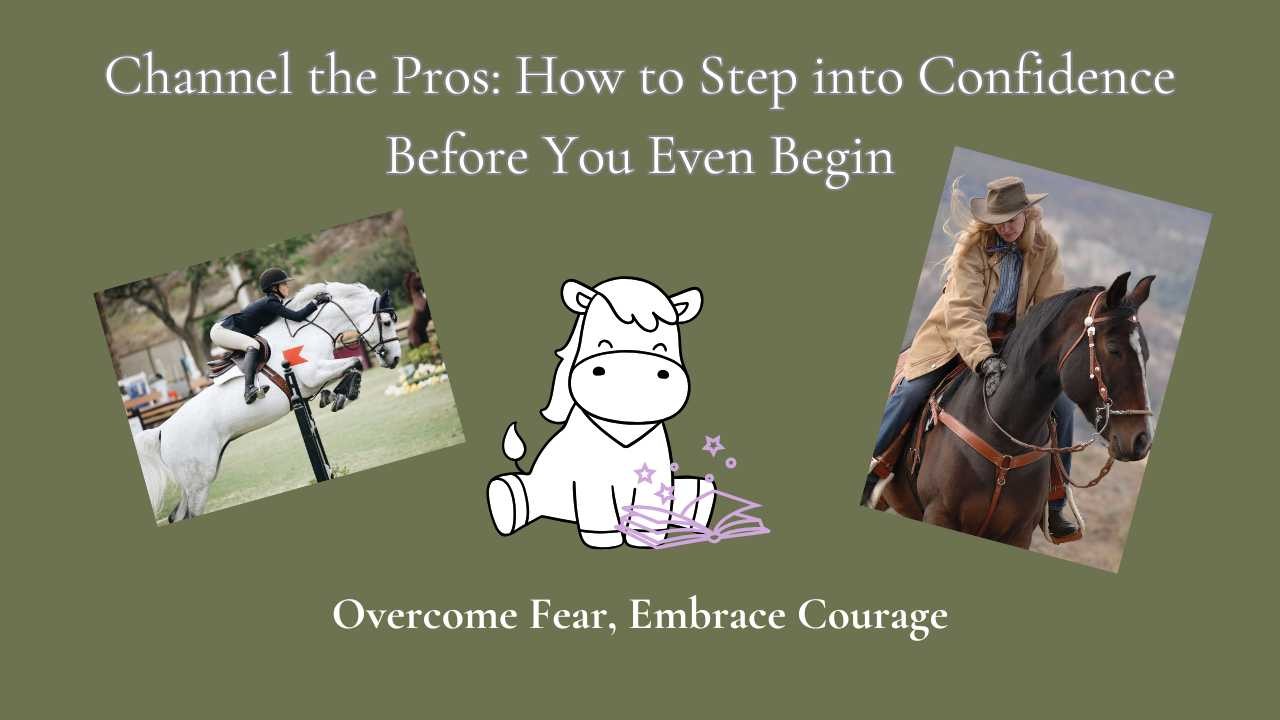
My horse was having a challenging day. You know the kind—ears tight, energy buzzing, and my own anxiety rising fast. I could feel my brain starting to shut down, that familiar fog creeping in. And then, out of nowhere, a thought popped into my head:
“What would Carson James do?”
Instant shift.
I wasn’t just thinking about Carson—I was channeling him. His calm. His clarity. His ability to assess, adjust, and act without drama. And just like that, my anxiety faded. My brain came back online. All the things I’d learned, all the tools I’d practiced—they were suddenly accessible again. I just needed to execute.
And I did. I had a great ride.
This is the confidence hack most riders (and coaches, and creatives) miss. We wait for confidence to show up after we’ve succeeded. But the pros? They summon it before they begin.
They ask, “What would my best self do here?” They channel that energy. They lead from it.
The great news? You can do this ahead of time—before you even walk into the barn. Pick your favorite trainer and walk in their shoes. The imagination we had as kids comes in handy here.
Pretend to be your favorite trainer.
Imagine stepping into their mindset. The one who handles chaos with grace. The one who doesn’t rush, doesn’t react—just responds and knows what to do.
Confidence isn’t about being fearless. It’s about remembering who you are and what you know—then choosing to lead from that place.
You don’t need more information. You need access to what you already know.
So go ahead. Channel the pro. Your brain—and your horse—will thank you.
✨ Want more tools to overcome anxiety and ride with clarity? Grab my workshop in ebook form: The Confidence Blueprint—9 Powerful Principles to Rebuild Your Confidence. For a limited time, it’s just $17. No travel, no pressure—just powerful insight, right where you are. Get your copy here!
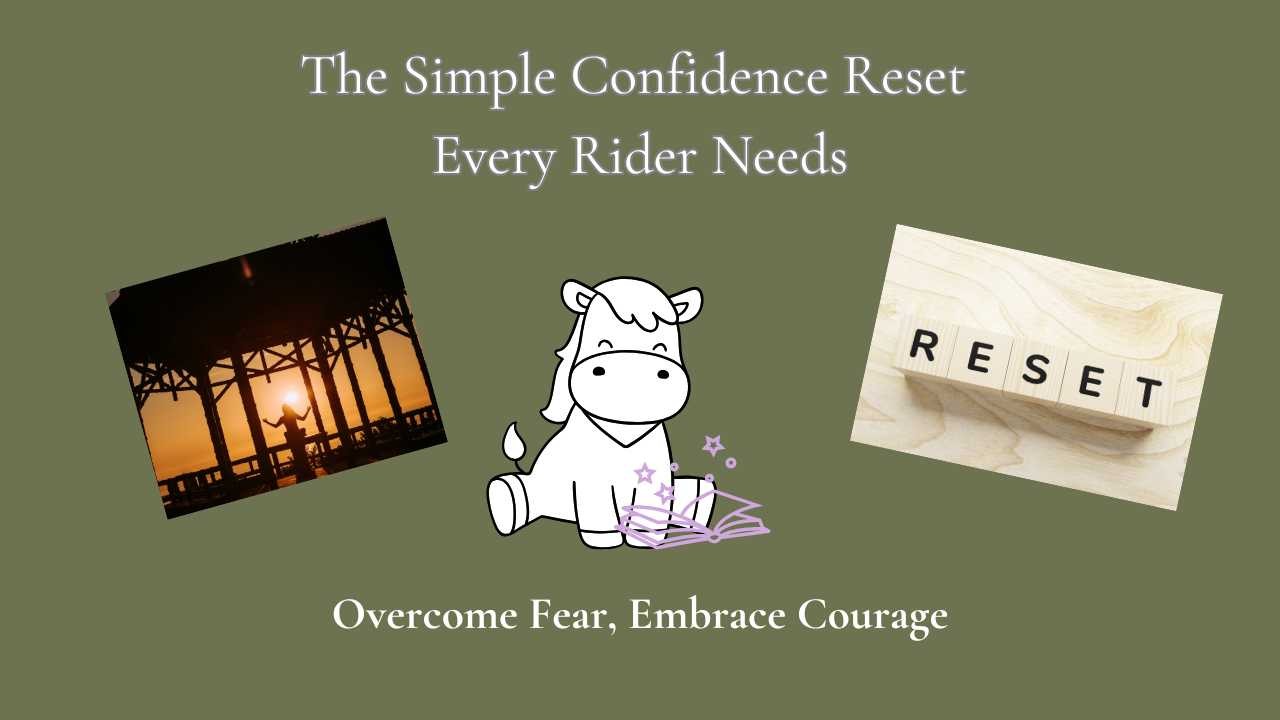
When anxiety or nerves creep in while you ride, your body knows it before your mind does. Shoulders tighten, breath shortens, and suddenly your horse feels that tension too. The harder you try to “push through,” the louder the fear seems to get.
That’s why I love the 3x3x3 Confidence Reset—a simple tool you can use anytime, anywhere, to calm your nervous system and bring your focus back. It’s quick, it’s practical, and it works even in the middle of a ride.
Here’s how it works:
Step 1: 3 Breaths
Pause and take three slow, deep breaths. Inhale through your nose, exhale through your mouth. Feel your shoulders drop a little lower each time. This step tells your body: “We’re safe.”
Pause and take three slow, deep breaths. Inhale through your nose, exhale through your mouth. Feel your shoulders drop a little lower each time. This step tells your body: “We’re safe.”
Step 2: 3 Things You See
Look around and name three things you can see. The fence post. The saddle horn. Your horse’s ears. Naming them out loud helps your brain shift from “what-if” thoughts to what’s real, right here, right now.
Look around and name three things you can see. The fence post. The saddle horn. Your horse’s ears. Naming them out loud helps your brain shift from “what-if” thoughts to what’s real, right here, right now.
Step 3: 3 Things You Feel
Notice three things you can physically feel. The leather reins in your hands. Your seat in the saddle. Your feet pressing into the stirrups. Grounding through sensation reconnects you to your body and steadies your presence.
Notice three things you can physically feel. The leather reins in your hands. Your seat in the saddle. Your feet pressing into the stirrups. Grounding through sensation reconnects you to your body and steadies your presence.
In less than a minute, this reset interrupts the spiral of anxious thoughts and gives your horse a calmer, more confident rider. And here’s the best part: the more you practice it, the faster your nervous system learns to respond. Eventually, confidence becomes your default, not fear.
I know firsthand how quickly confidence can be hijacked and how long it can take to rebuild. My own journey took me nearly twenty years—but it doesn’t have to take that long for you. With the right tools, like this reset, you can fast-track your calm and reclaim the joy of riding.
If you’re ready to take the next step and discover the tools that work best for you and your horse, let’s talk. Book your free Calm-Ride Strategy Call today, and let’s start filling your ride with confidence instead of fear.
